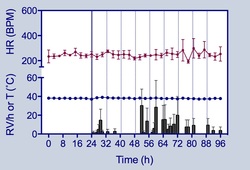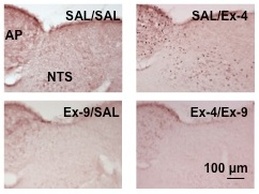The Scale of the Problem
Nausea and emesis during drug treatment or disease can be debilitating and can severely impact on the quality of life.
We are committed to understanding the mechanisms involved in emesis control and have a proven track record in translational research.
No other current laboratory in the world has been focussed on emesis research longer than ours.
We are committed to understanding the mechanisms involved in emesis control and have a proven track record in translational research.
No other current laboratory in the world has been focussed on emesis research longer than ours.
Chemotherapy-Induced Emesis: Anti-Emetic Drug Discovery

- In the late 1980s, we worked on the mechanism of action of the first generation of the 5-HT3 receptor antagonists and also explored the potential of broad inhibitory anti-emetic drugs for use in man.
- We developed the first animal model of cisplatin-induced acute and delayed emesis and revealed the potential of NK1 receptor antagonists to reduce acute and delayed emesis.
- We routinely assess novel compounds in our acute and delayed emesis model to help make decisions on the clinical development of new anti-emetics.
- We are recently collaborated with industry on the development and use of the second generation of 5-HT3 and NK1 receptor antagonists.
- We have several projects exploring novel targets for anti-emetic development.
Emetic Liability Testing

- Common laboratory animals do not vomit, therefore standard laboratory investigation usually fails to detect the potential of new chemical entities to induce nausea and emesis in man.
- We have access to preclinical models including the ferret and Suncus murinus (house musk shrew), and purpose built laboratories for in vivo experimentation.
- We have extensive knowledge on the pharmacology of the emetic reflex to help make decisions on the development of novel compounds with reduced emetic side effects.
- We are experts in the use of radiotelemetry to collect information simultaneously on cardiovascular function and on the electrogastrogram during behavioural experimentation.
- We also conduct research into mechanisms involved in feeding and general homeostasis as secondary measures affected by nausea and vomiting.
Current Interests and Opportunities

- We are interested in Forebrain-to-Brainstem-to-Gastrointestinal Tract communication and the ability of drugs to modify transmission in these pathways as monitored by biomarkers, molecular techniques, c-fos immunohistochemistry, electrophysiology, and electrogastroscopy.
- We have identified novel targets for the development of compounds for chemotherapy- motion- and drug-induced emesis.
- We lead the world in experimentation on gastric dysthryhmia using advanced radiotelemetric recording techniques in ferret, shrew and mouse models.
- Most of our work involves studying novel peptide mechanisms in the brain.